Modeling is one of the varieties of fine art, the essence of which is the creation of three-dimensional crafts from soft substances. The main feature of the products is their three-dimensionality. The material from which create three-dimensional figures, is available for sale among special self-hardening masses. It can also be prepared independently from improvised means.
Benefits of modeling crafts for children and adults
Sculpting is beneficial to humans, especially children. This type of activity is of great importance for education and upbringing.
Namely:
- develops and instills the skills required for effective school performance;
- promotes the development of a sense of beauty;
- improves spatial orientation;
- helps to master many mathematical concepts.
Modeling is especially useful for children with mental retardation.
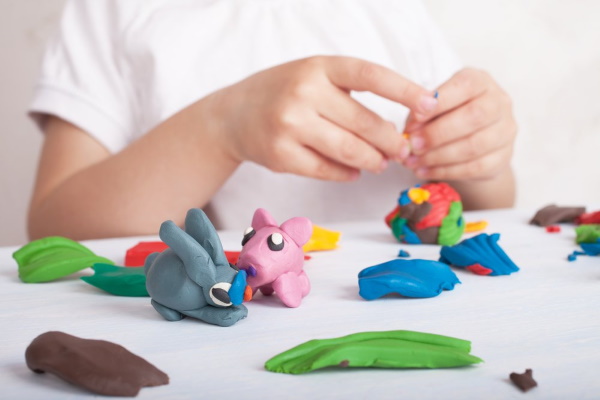
This type of activity:
- has a positive effect on sensory sensitivity: teaches one to subtly perceive the main characteristics of objects. This is their shape, texture, color, mass, plasticity;
- develops imagination and spatial thinking;
- helps children who make crafts from soft materials learn to plan their work in advance: set a goal, strive for it, anticipate the result and achieve it;
- develops fine motor skills;
- promotes the development of synchronization of the left and right hands;
- has a positive effect on moral qualities. The child learns to concentrate on work, overcome difficulties that arise and help a friend. With frequent modeling classes, the child develops perseverance, he becomes more proactive, inquisitive, begins to carefully plan his actions and bring the work to its full logical conclusion;
- develops the ability to express thoughts correctly. During work with plastic material, a plot is played out and a conversation is held with the student. Such a game organization stimulates speech activity and subsequently organizes a dialogue with an adult or with a sculpted character. Sculpting classes are a special situation that stimulates the development of the communicative function and expands the child's vocabulary;
- has a positive effect on the nervous system: reduces emotional stress, helps to lift the mood and relaxes. The substance used for modeling can be crumpled, rolled, squeezed, twisted, stretched, divided into pieces, flattened, cut with a stack. Each of these actions reflects certain feelings and emotions;
- allows you to combine two types of activity. Here you need to think and apply physical force. In order to give the material a certain shape, you need to perform certain actions: apply force, press on it. In this case, you first have to think about what action should be performed to give a piece of plastic material the desired shape.
Making crafts from plastic material also has a practical nature. When working with it, a child gets ideas that are then brought to life. Often, children mold toys, various decorations and souvenirs.
In the future, any of these products can be used as a gift or room decoration. If you make several figures at once, you can organize a small performance in a puppet theater.
Types of self-hardening masses for working with crafts
Self-hardening modeling clay can be made from different substances, the main thing is that it is soft and plastic.
Dough
Many children prefer to sculpt with dough rather than with plasticine.
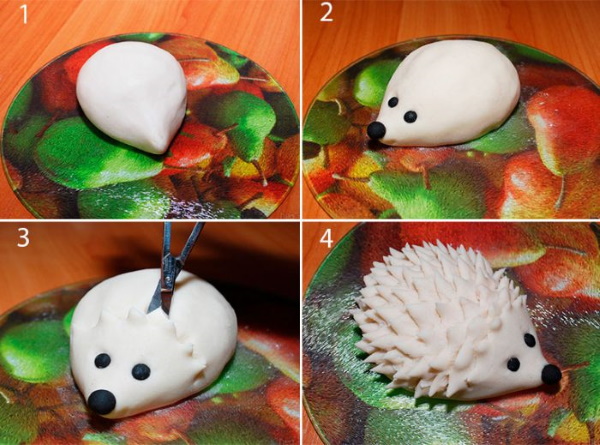
Its advantages are as follows:
- the dough feels much nicer to the touch than other masses;
- a figurine molded from dough can be covered with any paint and stored for many years, unlike plasticine;
- The dough is an environmentally friendly substance. It does not contain any chemical additives, so it does not cause allergic reactions in either adults or young sculptors.
Due to its ecological purity and safety, the dough is widely used in working with educational materials.
Plasticine
This is the most familiar material for modeling for children.
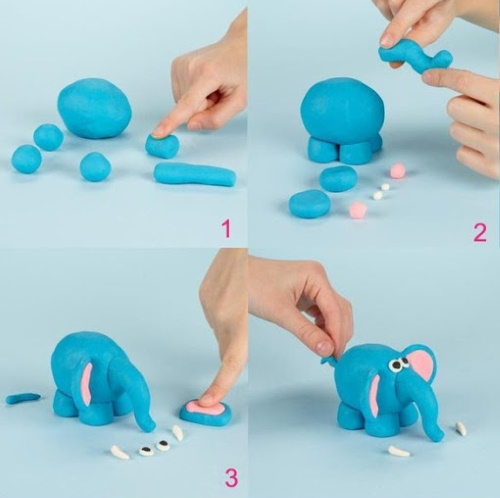
Plasticine has the following advantages:
- perfectly fastens the elements together, so the child can play with the molded figure without worrying that the elements might fall off;
- has a wide range of colors, which means that there is no need to paint the products after they are manufactured;
- The same piece can be used many times to create different figures. When the child has played enough with one, it can be taken apart and then molded into a new piece from the same material.
However, there are also problems when working with plasticine.
Namely:
- Before sculpting, the material must be thoroughly kneaded so that it becomes pliable;
- Plasticine sticks firmly to any surface it comes into contact with, especially fabrics, and is then difficult to wash off. Therefore, when working with it, you need to be careful, and it is recommended to use a special board.
Today, you can find special soft plasticine on sale that solves both of the above problems at once. It does not need to be kneaded before work, and it does not stick to your hands or the table.
Gypsum
This is a white freshly fired powder, which does not contain sand or other impurities. It is not easy to work with this substance: it hardens 30 minutes after adding water. It will not be possible to reuse it or adjust the finished product. The substance remains plastic only for the first 10-15 minutes. There is an opinion that gypsum has a positive effect on the human biofield.
Modeling clay
Special modeling mass is an improved type of clay.

This material:
- velvety;
- elastic;
- soft;
- plastic.
It is often compared to chewing gum because it stretches just as well.
Self-hardening modeling clay can have different colors and does not stick to your hands.
Modeling paste
The material is in many ways similar to ordinary clay.
Paste:
- plastic;
- pleasant to the touch;
- easy to warm up.

There are 2 types of paste, the main difference between which is in the methods of hardening. One type requires firing, and the other hardens on its own when exposed to open air.
The main drawback of this paste is its modest color range. There are only 2 colors - white and terracotta, so after production and hardening, the craft has to be painted.
Papier-mache paste
This material:
- designed for making crafts based on other objects;
- has good plasticity;
- does not stain hands;
- is distinguished by its lightness.
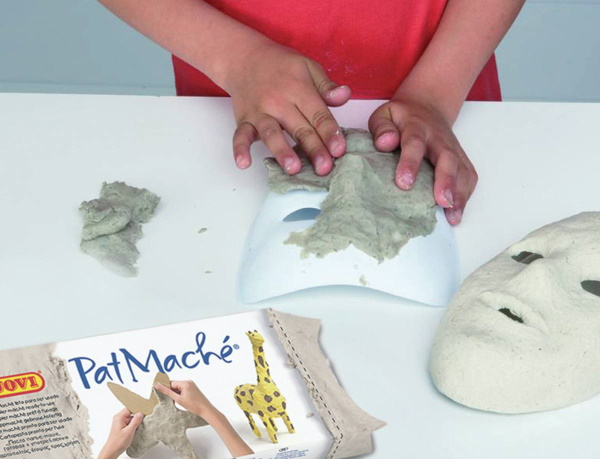
Papier-mâché paste takes a long time to harden, so if necessary, you can always correct the details that turned out poorly.
Advantages and disadvantages of modeling material
Among the materials intended for modeling, one of the most accessible is plasticine. The main advantage of crafts made from it is that they retain their shape for a long time. However, its hardness also results in its main disadvantage: it takes effort to soften it. A small child will not be able to cope with this task without the help of an adult.
Clay is softer and more pleasant to the touch than plasticine, however, a figurine made from it will take a long time to dry. The child will not be able to start playing with it right away.
Special modeling paste has many similar properties to clay, but does not require special drying in the oven. It dries quickly, and this can cause problems when connecting parts to each other.
The most advantageous material for modeling is dough.
Children enjoy working with him because:
- the material is soft;
- does not stick to hands;
- the parts fit together easily.
You can prepare such material yourself using flour, salt and water. The most important thing is that the dough is an environmentally friendly substance. Its only drawbacks are a long drying time (more than 10 hours) and soaking under the influence of water.
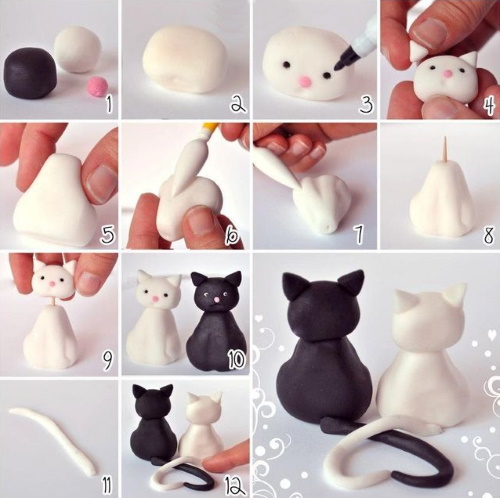
Special mass for modeling:
- has good plasticity;
- can stretch like chewing gum;
- does not stick to hands.
It takes less than 10 hours to dry products made from such a mass. After production, the figurine will not lose its shape for a long time, so the child will be able to play with it. Its only drawback is its high cost.
Instructions for preparation, rules for working with self-hardening masses
Self-hardening modeling clay can be prepared at home.
From putty, starch and PVA
You will need 3 teaspoons of PVA and 15 tablespoons of putty. To reduce or increase stickiness, liquid soap should be added to the composition. If the mass sticks to your hands, you need to increase the amount of soap. If it falls apart, you should add PVA.
Made of plaster
The gypsum powder is mixed with water until the mixture becomes like sour cream in consistency. You need to try to prepare the mixture quickly so that you can use it before it starts to set. You can slow down the setting by adding glue water.
From soda and starch
Regular glue with modified starch should be mixed with water in a ratio of 1:3.

- After adding 1 part of soda, you need to wait 20 minutes until the mixture swells.
- After this, you can add 2 drops of concentrated liquid soap and mix thoroughly.
- If necessary, you can add more starch. It can be potato starch.
- For kneading, add a little Vaseline oil.
From starch, PVA and baby oil
You need to take corn starch, PVA glue, Johnson's Baby oil and soda in a ratio of 4:4:2:1 respectively. Then add a couple of drops of Nivea fat cream, citric acid and glycerin. Mix everything thoroughly.
From flour
This option requires 3 components: flour, salt, water. The first 2 of these components are taken in equal proportions. Then water is added. Additional components can be added to change the properties of the mass.

For example:
| Recipe | Description |
| With cream of tartar | The ingredients you need to prepare are:
Preparation:
|
| In the microwave | You need to take:
Preparation:
|
| Without water | For work we take:
Preparation:
|
Papier-mache recipe
To prepare the modeling mass, you need to prepare:
- PVA glue – 250 g;
- plain toilet paper – 40 g;
- dishwashing liquid – 1 tbsp;
- vegetable oil – 2 tbsp;
- starch (corn or potato) – 50 g;
- flour – 100 g;
- lemon juice as a preservative.
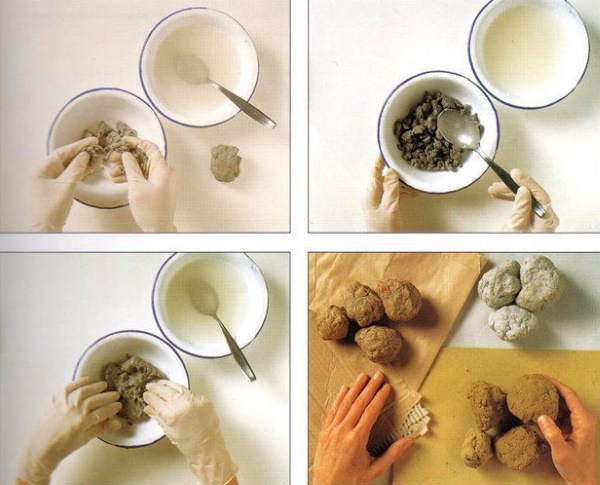
Before using the material, all ingredients are thoroughly mixed.
Tips for working with self-hardening mass
Self-hardening products made from special masses for modeling can be painted at your discretion, using varnish or watercolor paint. The smallest details can be painted with felt-tip pens. On the largest figures, cracks may form after they dry. However, this is not a big problem, because the defects can be covered with fresh material or simply painted over.
Master classes on creating crafts
There are many examples of using purchased or homemade plastic materials.
Horses - fridge magnets made from salt dough
To make horse figures to decorate your refrigerator, you should take:
- salt dough;
- gouache;
- finishing varnish composition;
- acrylic contours.
The work takes place in the following stages:
- Pinch off a small piece of dough and shape it into a ball.
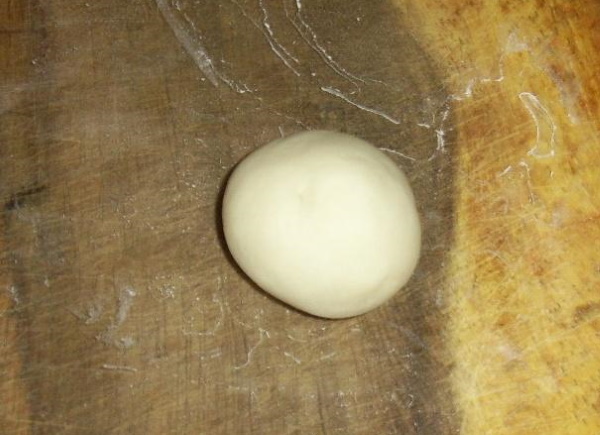
- Roll the ball into a sausage, making it larger on one end than the other.
- Bend the figure and press it with your fingers, resulting in the silhouette of a horse.
- Draw out a pair of ears on the head and hooves on the lower part of the body.
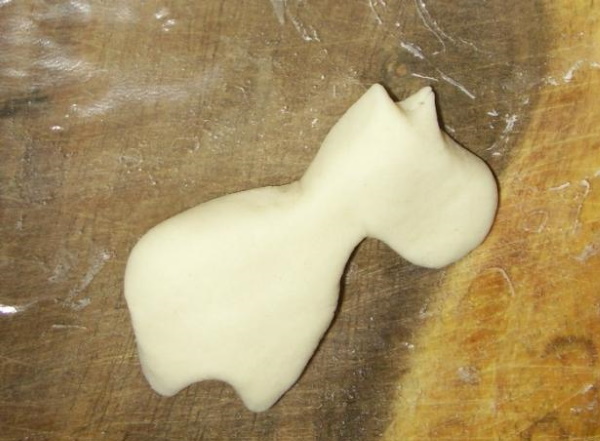
- Glue the mane and tail with a hot glue gun.
- After drying, cover the figure with gouache of different colors and treat with a protective varnish.
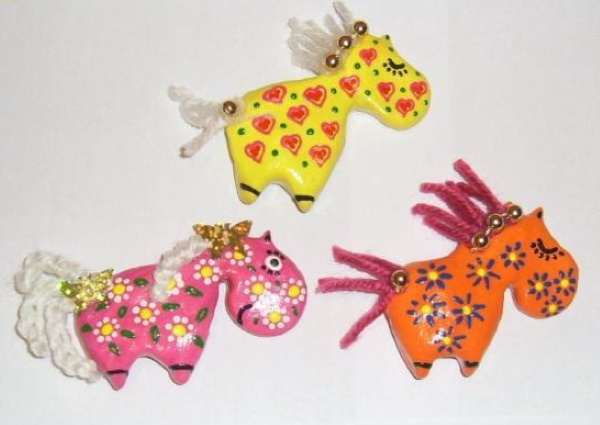
It is better to make not 1, but several figures. They can be multi-colored, so that their bright appearance pleases everyone who comes to the refrigerator.
Plasticine panda
To work you will need:
- green, white and black plasticine;
- toothpicks;
- stack.
The production consists of the following stages:
- Make a ball out of white plasticine and press a couple of holes in it for the eyes.
- Roll balls from the black piece, insert them into the eye holes and press them in, flattening them.
- Roll an oval out of white plasticine and attach it to the bottom of the head. This will be the muzzle. Attach a small black ball to it. This is the nose.
- From small pieces of white, green and black, mold the eyes and place them in the recesses on the head.
- Attach a pair of black ears to the top of the head.
- Roll a roll of black plasticine, squeeze its central part and bend the ends.

- Form a white ball and attach it to the black piece.
- Connect the blanks and the head. A toothpick is used for this.
- Sculpt and attach the black lower paws to the figure.
- Make several small balls from a piece of white and attach them to the paws. These will be pads.
- Draw eyebrows above the eyes using a toothpick.
- Make a ball out of black plasticine and stick it in place of the tail.
- Make bamboo branches from green plasticine. It should be attached to the panda's body.
Polymer Clay Flowers
Self-hardening modeling clay in the form of polymer clay is perfect for making flowers.
To work, you need to prepare the following materials and tools:
- self-hardening mass;
- small scissors;
- toothpick;
- gloves;
- protective varnish composition.

The production process takes place in the following stages:
- Form 6 balls from red clay.
- Press each of them with your fingers to form thin circles.
- Make leaves. For this, use a small piece of green clay. Make an oval out of it, and then press the resulting figure on the sides. Use a toothpick to add texture.
- Make the central part of the flower. First, mold a small ball from black clay, then press the resulting shape from 2 sides to form an oval. Next, use scissors to leave notches on the sides of the workpiece.
- Assemble a flower arrangement. Treat all flower elements with liquid plasticizer.
- Proceed to collecting the flower bed with the core and subsequent fixation of the stems and leaves.
- Treat the finished product with a protective varnish.
How long and where to dry finished crafts?
You can dry finished crafts in different ways, depending on what material was used in their production.
For example:
- dough figures are usually placed in the oven and after drying are covered with varnish;
- The papier-mâché product takes a long time to harden, but the sculptor will have the opportunity to correct some details if necessary. To do this, first wet the figure with a little water. Paint should be applied to the papier-mâché product only after it has dried.
It takes about 6 hours for items made from special modeling mass to dry; - gypsum products must be dried at a temperature no higher than 60° C. If it is exceeded, the material will begin to decompose and lose its strength, and many cracks will form on the surface of the product.
Modeling is a good way to conduct classes with children. Students like this kind of activity, and they are happy to make crafts from various self-hardening masses. It is also important that such an activity requires minimal financial costs.
Video about modeling clay
How to make modeling dough from flour:
